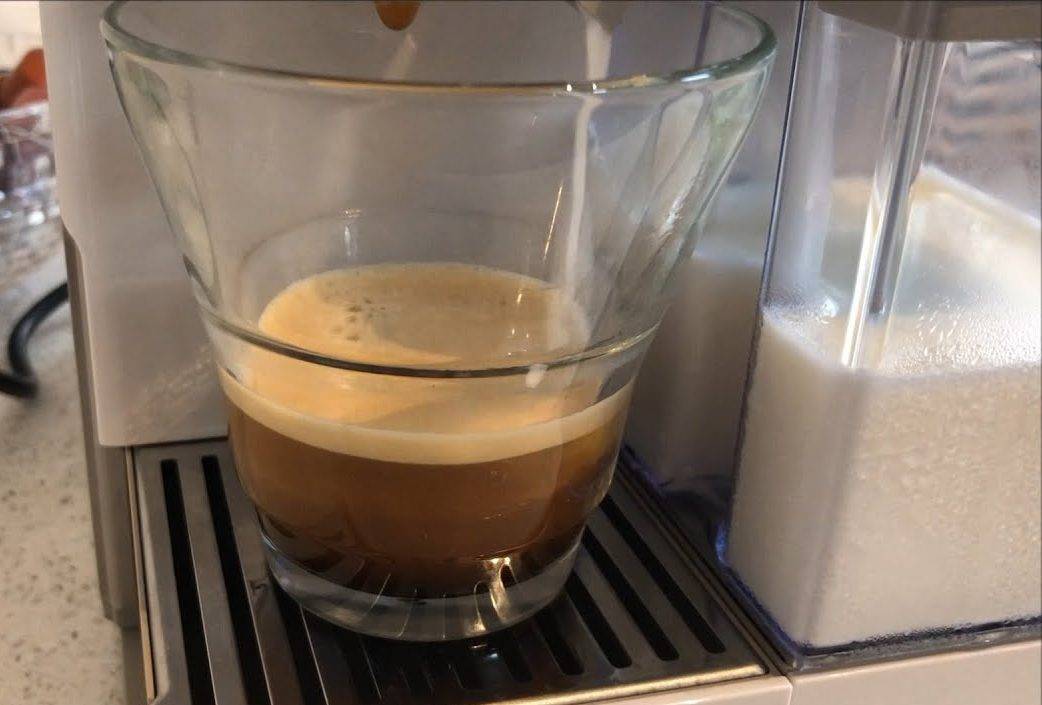Nespresso pods are so convenient that many of us drink several of them a day without even thinking about it. But wait! Is this a good idea or not? Are Nespresso pods safe?
Nespresso pods are safe because the hot water and coffee don’t come in direct contact with the aluminum and instead get in contact with the food-grade shellac coating and only for a short duration. NespressoPods are also BPA-free.
This article will discuss the ingredients of Nespresso pods and what they contain. Let’s get started by making a cup of coffee.
What’s Nespresso Pods Made of?
Image courtesy of Nespresso
A Nespresso Pod consists almost entirely of three materials:
- The lid and the pod are made from aluminum.
- There is a shellac coating present inside the cup.
- A paper filter is located inside the pod.
The aluminum is used to keep any outside contaminants away from the coffee grounds inside the pod. The aluminum helps keep the coffee fresh and safe for consumption. This helps to ensure that your coffee is fresh and fragrant when it is brewed.
Aluminum can also be recycled indefinitely. Using aluminum in the Nespresso pods eliminates the need to overwrap the pod. And aluminum is lightweight, so it makes transportation easier.
The inner shellac coat is used to prevent aluminum from leaching into the coffee brew. You have likely eaten shellac-grade food products if your favorite candy has had confectioner’s glaze or taken a timed delivery pill. Fun fact! Did you know that shellac can be derived from natural resins secreted by lac bugs onto trees? I’ll let you judge whether that’s gross or cool.
Finally, the Nespresso pods come with a paper filter. This filter, which is identical to those used in drip coffee machines, prevents the coffee grind from spilling into the coffee.
Are Nespresso Capsules Harmful?
Nespresso capsules are entirely safe and not the least bit harmful. The pods have aluminum so I understand your concerns. But Nespresso pods are designed to prevent aluminum from leaching into the coffee.
During the brewing process, the water and the coffee in the Nespresso pod are prevented from contacting the Aluminum or plastic parts of the Nespresso capsule.
Instead, they contact the inner shellac, which is food grade and strong enough for hot water to be held away from the rest. It helps that the hot water only remains in contact with the capsule for a short period of time. Furthermore, Nespresso Pod components do not contain any BPA and are completely inert.
You don’t need to worry too much about the paper filter. Nespresso pod manufacturers use food-safe paper inside their capsules, just like you’d find in the paper coffee filters you’ve been using all of your life.
Are Nespresso Pods Carcinogenic?
You can get benefits from coffee if you consume it in moderation. A compound called furan is found in coffee. This can raise concerns I’d like to address.
Furan is produced during coffee roasting. It can persist in the beans and coffee. Furan is a toxic and carcinogenic aromatic compound.
According to ScienceDaily, espresso made from capsules contains more furan than other coffee brewing methods. The seal on the capsules is what causes the higher levels. The sealing of the capsules keeps coffee fresher and also prevents any furan from evaporating from the grounds.
Furan is also extracted more in espresso than in drip coffee because of the higher water temperatures and higher pressures. As regular espresso machines, Nespresso machines also rely on high temperatures and pressures, which slightly increases the risk of furan.
You shouldn’t be! Absolutely not!
Before you back away from your Nespresso, here’s the final result from the study:
To obtain a potentially hazardous amount of furan you would have to drink at minimum 20 cups of capsule espresso per day. This would be equivalent to 30 cups of instant or 200 cup espressos.
Now, I’m a big coffee drinker, but I can’t remember the last time I had 20 cups of coffee in one day. You shouldn’t be consuming anything at those levels! Nespresso Coffee is safe and harmless when taken in normal (or moderately) large amounts.
If you’re still worried, you can always switch to reusable Nespresso pods. They don’t have a hermetically sealed seal so the furan content is the same as regular espresso.
Are Nespresso Pods BPA Free?
Nespresso pods are BPA-free. They do not contain any Bisphenol and are fully compliant with all food safety regulations of the FDA, EU, and other related agencies.
BPA (Bisphenol A), is an industrial chemical used for making plastics. It is used mainly to harden polycarbonate plastics. BPA can not be used for food containers.
Pod Save My Coffee
Moderation is key in all things. Nespresso coffee can be drank several times per day. This means that a 2-cup-a-day caffeine intake is not an issue. You might be concerned about jitteriness. Check out the Nespresso caffein content chart.
Now let’s discuss how to ensure that every cup of Nespresso coffee you drink is worth it. Have you tried all of the best Nespresso pods for cappuccinos? There’s good reason Starbucks drinks have milk. If you haven’t picked out your Nespresso machine yet, my guide to the differences between Nespresso Vertuo vs Original machines is a great primer. You can also read my detailed NespressoVertuoPlusdeluxe review, in which I highlight my favorite Nespresso machines.

